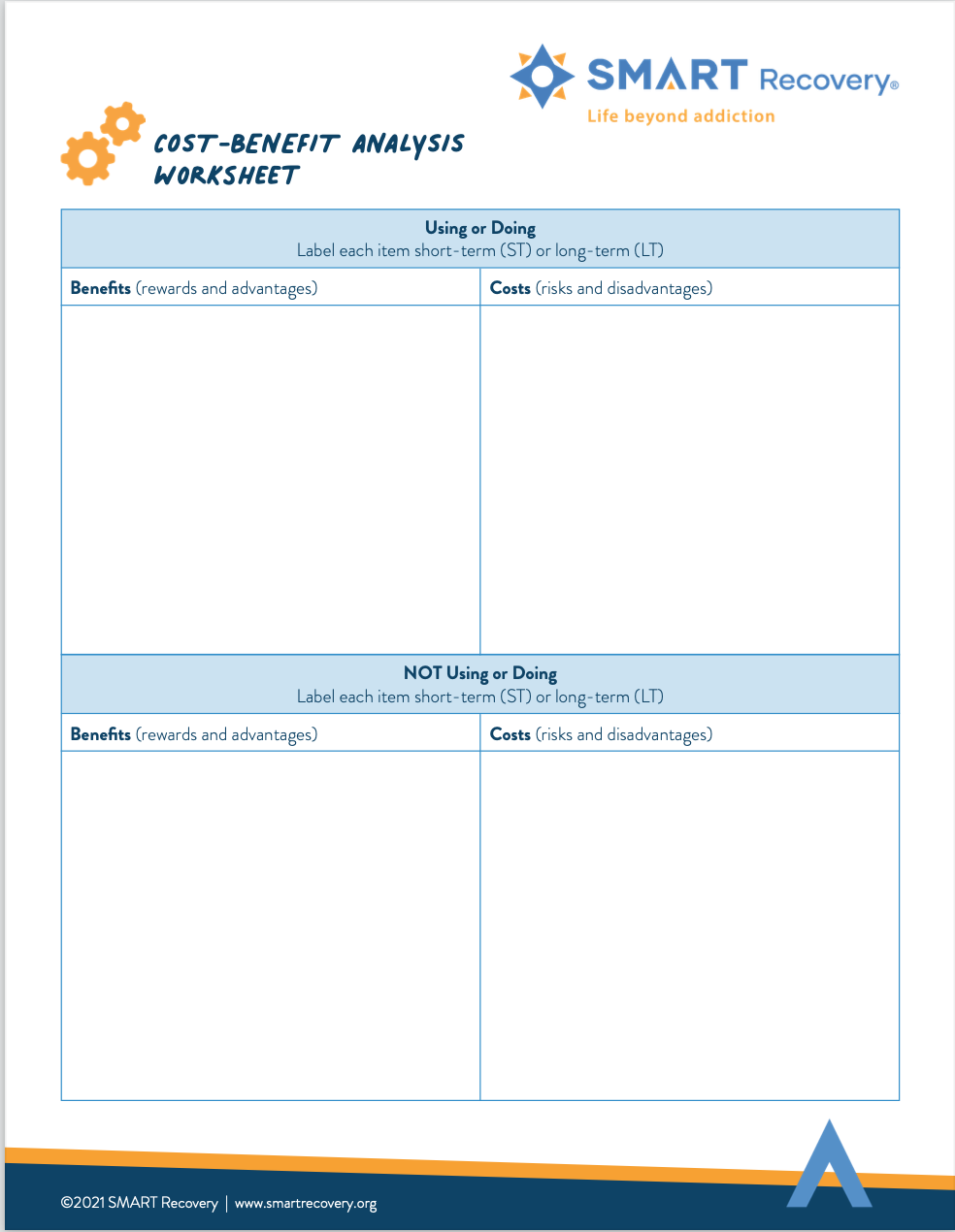Point 1
When to use this tool: Use this tool when a member makes it clear that they they are having difficulty maintaining motivation, it’s often useful to work with the individual to help them explore the positive and negative consequences (the costs and the benefits).
Common questions or statements that may prompt using this tool:
- “Why bother to quit using? It’s too hard.”
- “What’s the use? I’m just going to relapse anyway.”
- Whenever a member seems to be wavering in his/her motivation to alter his/her behavior.
Example of its use in a SMART meeting:
The group can work together to help the person document:
- The benefits of engaging in an addictive behavior pattern T
- he benefits of not doing so.
Some view this process as a “Time Effects” analysis because it is the effects over time that people don’t like, while others prefer to refer to it as a “Risk/Reward” analysis. Regardless, the idea is to get the individual to seriously consider the “Costs” and “Benefits” related to his/her behavior.
NOTE: It’s useful to have a member or the Facilitator document the responses. You can use a folded piece of paper, putting the positive effects on one side and the negative effects on the other, or place two columns on a flipchart, marking one “positive” and the other “negative”
A Facilitator may wish to start with the question: “Let’s assume that you decide to drink (use, gamble, engage in unsafe sex, etc.), what will be the positive effects in one to two minutes?” (Group members often provide the negative effects, despite the question!) It’s appropriate to start with the positive effects because that is why they continue to decide to drink, use, etc.
Then ask: “What will be the positive effects in two hours, assuming you continue to drink?”
Then inquire: “What will happen in 24 hours? in two days? in two years? in twenty years?”
Then, continue by asking about the negative effects. “Let’s assume that you decide not to drink (or gamble, use, etc.): what will be the positive effects of that decision in one to two minutes? two hours? the next day?” etc. Then ask “what will be the negative effects of not drinking.”
You may wish to change the time spans depending on the individual’s circumstances. Examples: ask about one to two minutes, two hours, six hours, the next morning, the next week …
Note: Age has an impact on the answers. Young people know that bonding with friends is an important and healthy part of growing up. So getting drunk with your buddies has positive effects over time (i.e. a young person may indicate “having fun with friends” as a benefit of continued use.) But, of course, if s/he overdoes it, s/he may experience very negative (perhaps even lethal) effects over time.
Someone may not be able to come up with the positive effects of not drinking or using in one to two minutes. The answer: You get the opportunity to practice standing the discomfort and of learning how to resist urges. Likewise, the negative effects in one to two minutes are that you lose these opportunities AND you reinforce the belief: “I have to have what I want when I want it! WAH!”
Helpful Links:
- Public-Facing Toolbox Page: www.smartrecovery.org/cost-benefit-analysis
- Updated Tool PDF (03/2021): https://www.smartrecovery.org/wp-content/uploads/2021/03/CBA-108-updated.pdf
- Video Link: https://youtu.be/k2e2TNSTurs


